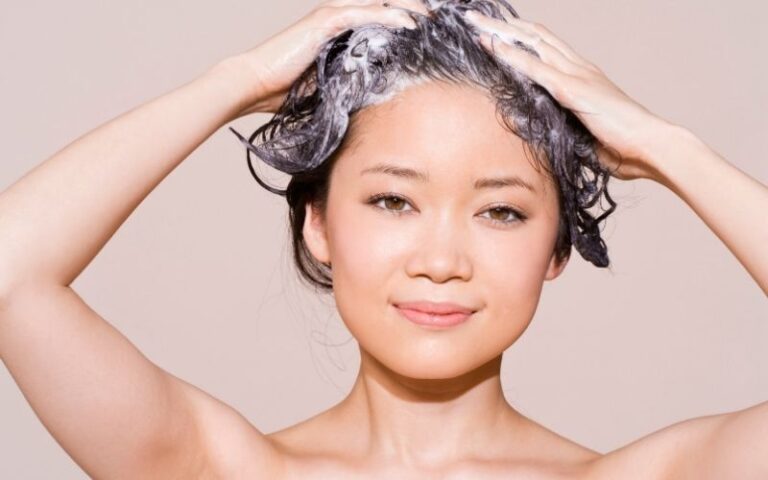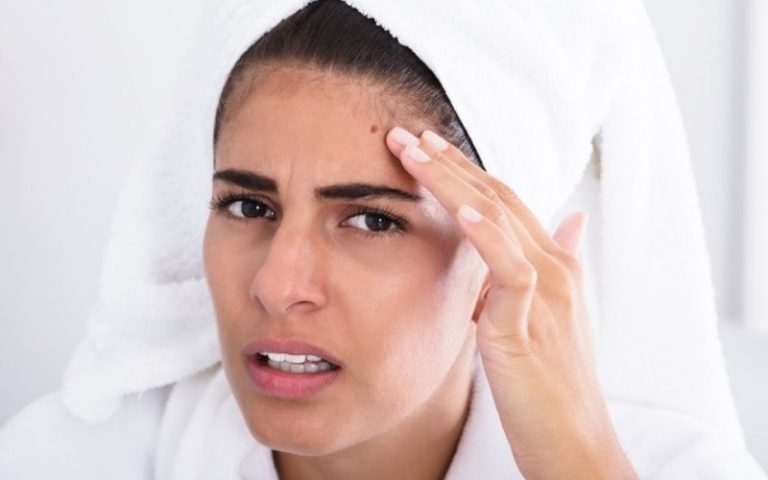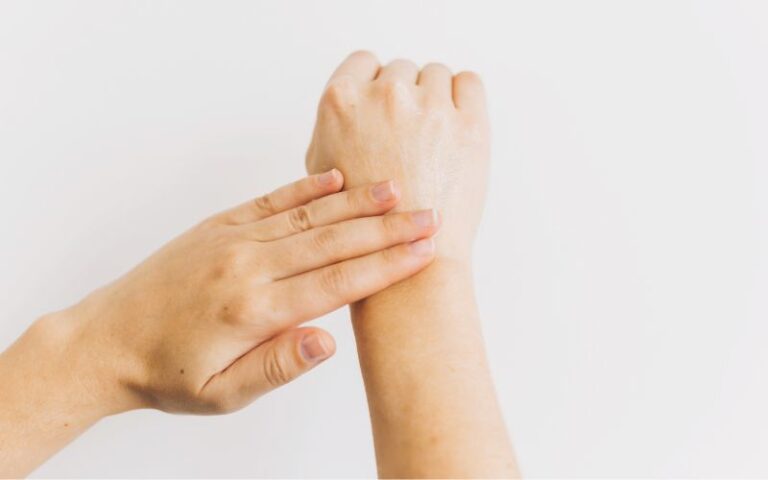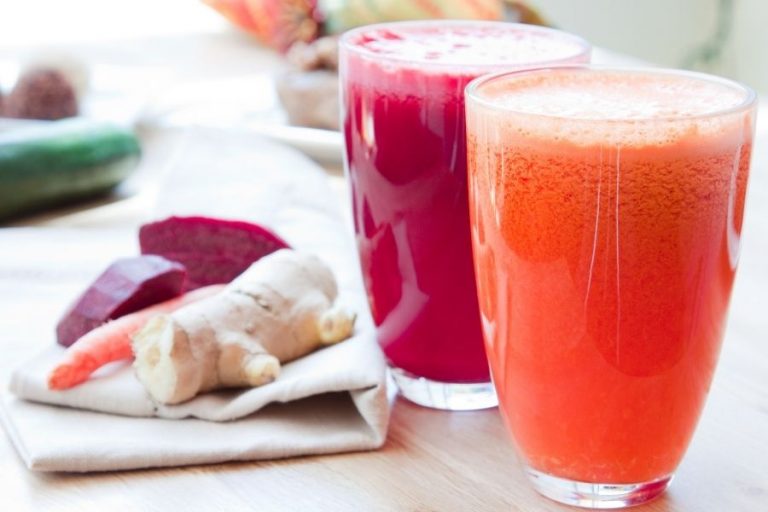6 Popular Foods People With Clear Skin Avoid At All Costs

We know you’re thinking, “I really hope none of the things I like to eat are on this list!”
Working on healthy skin naturally in terms of vitamins/supplements, exercise, weight loss, and great sleep is amazing and you don’t need the medical advice of a dermatologist to tell you that.
While it’s true that the effects of genetics and environmental factors are no myth, there’s just no denying that diet plays a role in your skin health, too!
Cleansing and exfoliating only do so much, and the right food choices can help acne sufferers avoid that annoying pimple or blemish.
Does diet affect skin of all ages?
Adolescents and young adults are particularly affected by the food they eat due to hormonal fluctuations. However, adult acne is also prevalent.
The sex hormones produced by adult women (androgen, estrogen, and progesterone) and adult men (testosterone) can also cause hormonal imbalance.
But we can avoid foods that make these hormonal imbalances worse!
Whether your favorite foods are good for your acne-prone skin or a culprit, there are some general guidelines about the role of diet in preventing the annoying acne vulgaris along your jawline (a.k.a. COVID “mask-ne”).
Before we go into the foods you should avoid, it’s important to talk about how inflammation plays a role in acne development and acne severity (1).
Inflammation
One thing that all these no-no foods have in common is that they cause inflammation.
Just like your immune system instructs your body’s white blood cells to produce antibodies to fight infection, your body produces insulin to manage glucose in your blood.
When the blood sugar level (glycemic load), becomes too high then a lot of insulin has to be pumped into your system to reduce the glucose level.
High blood sugar from time to time is nothing to be alarmed by. But, constantly putting your body in that position by eating a high glycemic load diet creates insulin resistance, which can build up and result in more insulin production and more inflammation.
Insulin is a hormone that can have damaging effects when too much is introduced to the body too often.
Excess hormones can cause an increase in the production of sebum, an oily, waxy substance produced by your body’s sebaceous glands.
So this excess sebum from sebum production contributes to oily skin which can lead to clogged pores and trigger redness, new pimples, hormonal acne, and even inflammatory lesions. (2)
Therefore, it’s important to have a low glycemic diet especially if you have acne-prone skin.
Chocolate
A universal favorite, chocolate is the comfort food of choice! It’s just so creamy, dreamy, and brings a smile to your face. But is it bad for acne-prone skin?
First, let’s make a separation here between dark and milk chocolate. Disclaimer: There is no definitive research that dark chocolate, made up of at least 70% cacao, is bad for acne development. For some of you “Whew…”. (3)
But milk chocolate is a totally different story. Milk chocolate is high in refined sugars like many desserts and sweets which means it can increase acne severity. Why? With refined sugars, all the nutrients have been stripped away and all you’re left with is a sweet flavor.
What happens is that when eaten they digest quickly which results in unhealthy spikes in blood sugar levels. This can cause immediate effects like changes in mood or energy and an undesirable long-term effect known as belly fat.
Hormonal effects of chocolate
Too much sugar in your system and triggers an insulin spike from your pancreas to clear the sugar from your blood. Insulin is a hormone and the insulin surge can cause an activation of your oil glands which can result in oily skin, pimples, and maybe a breakout or few.
Then, to add insult to injury, all that insulin can leave you feeling hungry which makes you crave more sugary carbohydrates. Now you’re overeating, putting on more weight, raising insulin resistance, and possibly developing type 2 diabetes.
Diets high in refined sugar and carbs have also been linked to high blood pressure, heart disease, obesity, and mood disorders. Let’s be clear, chocolate and other refined sugars are not the only simple carbohydrates in the refined sugars and carbs categories. (4)
Other refined foods
Many of us in our teenage years thought that pizza was our own healthy food group. But the following are examples of empty starches that have high sugar content and are unhealthy foods and snacks (5):
- Pizza dough
- French fries
- White bread
- Pasta
- Potato chips
- Pretzels
- Pastries
- White flour
- White sugar
- White rice
- White potatoes
- Cake
- Muffins
- Sugary breakfast cereals
- Sugary drinks
These are snacks that have a high sugar content.
A diet high in these foods can lead to excess oil production and bad skin health outcomes. These processed carbohydrates have what’s known as a high glycemic index.
This index measures how quickly foods cause increases in glucose levels.
So a high-glycemic diet that includes sugary foods and unhealthy snack foods increases your risk of acne. (18)
Dairy
When we think of dairy consumption, we look beyond milk — milk products, like cheese, cottage cheese, cream cheese, yogurt, and ice cream.
But cow’s milk is the basis for dairy products.
We already know that insulin is a hormone and when your pancreas releases too much of it there can be trouble for your skin.
Dairy hormonal effects
Milk is like a double whammy because it contains an insulin-like growth factor (IGF-1) which is what our bodies naturally produce, especially during puberty.
But it also contains other hormones including prolactin, prostaglandins, and steroids.
Also, farmers often treat cows with a synthetic hormone called recombinant bovine growth hormone (rBGH) to increase milk production.
RBGH stimulates a cow’s milk production by increasing their levels of IGF-1. This means that humans drinking milk can absorb additional hormones which can increase the severity of acne (6).
Well, what if I drink skim milk?
The link between acne and dairy is stronger for skim milk than low fat and whole milk because people who drink skim milk tend to have higher milk consumption than if they were drinking low-fat or whole milk.
Also, whey and casein, milk’s main proteins, increase blood insulin levels which over time can lead to insulin resistance and can contribute to an acne breakout.
Luckily, there’s a wide variety of non-dairy milks that are delicious substitutions to cow’s milk, like soy, almond, cashew, hemp, flaxseed, and oat (7).
Alcohol
Let’s go to that other comfort “food”. After a long day, it’s nice to enjoy those adult beverages to take the edge off.
There are many different ways to consume alcohol whether it’s beer, wine, spirits, on ice, heated up, or mixed up.
Although drinking alcohol doesn’t cause acne, there’s more than one small study that has shown that it can affect certain bodily systems and cause a hormonal imbalance.
That imbalance can indirectly contribute to acne so alcohol should be consumed in moderation.
Your body processes alcohol like sugar which can contribute to inflammation which can exacerbate acne. It’s the same story, the excessive sugar intake can cause insulin surges which can trigger inflammation.
Regular drinking can have the same effect as eating refined sugars in that you become more insulin-resistant which does more damage.
Addictive effect of drinking
Also, drinking can be addictive.
This means you could over-consume while you are drinking.
Like other addictions, it can take more and more consumption to get the same buzz. Over time, your average alcohol consumption can increase and contribute to changes in hormone levels that enlarges skin pores and make for zit problems.
Not only does your alcohol consumption increase each time you drink, but you may drink more often, thus making your goal of clearer skin more difficult. (8)
Dehydration
Also, there is a correlation between alcohol and dehydration. Alcohol is a diuretic which means that it sends fluid out of your body (FYI the caffeine in your morning coffee(s) is also a diuretic).
That’s why the more you drink the more you pee!
Dehydration causes your skin to lose its plumpness and elasticity which leads to dryness, flakiness, and wrinkles which of course are not signs of good skin health.
Also, if you are dehydrated then your body is not going to do as well flushing harmful toxins from your body which can trigger acne.
Binge drinking can overwhelm your liver.
The purpose of your liver is to remove harmful toxins, like alcohol, from your body.
So the bad news is that if your liver is not functioning properly then an increase in harmful toxins can increase the severity of an acne breakout. (9)
Another side effect of alcohol is that it can dilate your blood vessels.
That’s why people who have been drinking look “flushed”. This results in an opening of your pores and makes them more vulnerable to bacteria and can result in blackheads, whiteheads, rosacea, or acne (9).
Fast Food
Fast food is yummy but for most people, it’s a Venus fly trap made up of delicious, fatty foods.
There’s nothing like that triple cheese bacon burger with large fries and a large milkshake.
This is also known as the typical western diet which is very popular in the United States.
But it’s time to bring the effects of this inflammatory food into the sunlight. That greasy food, which includes grease-filled salad dressings, is a diet that is rich in calories, fat, salt, and refined carbohydrates.
We discussed refined carbs while talking about chocolate (fries). We discussed dairy (milkshake).
But fast food also includes burgers, hot dogs, nuggets, and other extremely calorie-rich foods.
Saturated fat effect on skin
What does this have to do with skin?
Red meat, processed meat, and deep-fried meat are all high in saturated fat. Saturated fat is a contributor to inflammation. (10)
There are recent studies showing that high-fat meals promote endotoxin translocation into the bloodstream.
It’s a fancy way of saying that your immune cells get “short-circuited”. This produces an inappropriate inflammatory response as a consequence and contributes to severe acne. (10)
Therefore, whenever you eat food with ingredients high in saturated fat, like fast food, you tempt your body to produce excess oil which of course can cause the formation of acne.
It also harms your overall health through problems like weight gain, obesity, and cardiovascular disease which are precursors to serious events like stroke or heart attack (11).
Foods rich in omega-6 fats
Diets containing large amounts of omega-6 fatty acids, like the typical western diet, have been linked to increased levels of inflammation and acne.
This is because western diets contain large amounts of vegetable oils (soybean oil, sunflower oil, olive oil, and coconut oil), which are rich in omega-6 fats, and few foods that contain essential fatty acids with omega-3 fats, like fish and walnuts.
Vegetable oils are found in processed foods like margarine, mayonnaise, and salad dressings. The problem is that omega-6 fatty acids tend to promote inflammation while omega-3 fatty acids are anti-inflammatory.
A healthy diet contains a balance of omega-3 and omega-6 fatty acids so when omega-6 consumption is too high, the balance is lost and inflammation is promoted (12).
Whey protein powder
This is a popular dietary supplement, and for many people, it works very well without side effects.
However, it can be problematic for acne-prone people.
Whey is the liquid remaining after milk has been curdled and strained. It’s a byproduct of the manufacture of cheese or casein.
Therefore, whey brings with it some of the skin conditions that are also associated with dairy products.
Whey is also a rich source of the amino acids leucine and glutamine.
These amino acids make skin cells grow and divide more quickly which may contribute to acne.
These amino acids can also stimulate the body to produce higher levels of insulin which contribute to inflammation and thus links it to the development of acne.
Over time, continued consumption of whey protein can create havoc by reducing insulin sensitivity and open up acne severity and skin problems related to excess insulin production caused by blood sugar spikes (13).
Some food and other ideas for better skin
Some people swear that, for example, ice cream consumption doesn’t contribute to any skin problem or acne.
However, there seems to be more and more dermatology evidence that overconsumption of certain foods causes inflammation, and avoiding those foods can result in fewer severe acne breakouts.
Therefore, monitoring your diet can go a long way to reducing inflammation and enhancing skin health.
A healthy diet is great for skin health because it doesn’t alter hormones or negatively affect your immune system (14).
It’s a good idea to eat different types of foods or juices, that contribute to good health, like the following (15):
- Veggies (carrots, sweet potatoes)
- Green vegetables (spinach, broccoli, kale, seaweed)
- Fresh fruits (apples, berries, pumpkin)
- Legumes
- Whole foods (whole grains, flax seeds, chia seeds, brown rice, oatmeal)
- Foods with healthy fats (walnuts, peanuts, almonds)
- Substitute cow’s milk with almond milk.
- Try to substitute processed and fatty meats with lean meat or other lean protein like soy or tempeh
- Salads
Certain seafood like oysters, tuna, and sardines, can be the right choice to achieve healthier skin. Oysters are good sources of zinc while tuna and sardines are loaded with omega-3 which is great for reducing inflammation.
Foods like onions, sauerkraut, kimchee, and other fermented foods like kefir (fermented milk) are high in sulfur which can help dry out oily skin and clear acne.
Fermented foods can also help prevent harmful bacteria which helps to promote good digestion and GI health.
It may also be worth consulting with a nutritionist who can evaluate your dietary factors and help to create a dietary change.
They can help guide you to good choices that address your dermatology and nutritional deficiency issues with an anti-acne diet.
If you are having acne outbreak problems try working with a nutritionist to find some alternative foods to minimize the hormonal changes that cause acne development.
Some topicals and supplements for better skin
According to the Journal of the American Academy of Dermatology, some topicals can help with acne vulgaris or acne. Research shows there are 4 main causes for the occurrence of acne (16):
- Excess oil (sebum) production
- Hair follicles clogged by oil and dead skin cells
- Bacteria
- Inflammation
Teenage acne is most common but it can affect people of all ages. Topicals are acne medication that can help with the first 3 of those causes to prevent both mild symptoms and more advanced symptoms like acne lesions.
Some well-known topicals are in the treatment of acne are (16):
- Benzoyl peroxide
- Retinoids
- Salicylic acid
There are also some well-known supplements and foods that have shown health benefits because they contain (17):
- Probiotics
- Antioxidants
- Vitamin A
- Vitamin E
- Zinc
- Calcium
- Fish oil
Summary
Do you feel like you’ve tried every supplement, topical, cleansing routine, and a million other things that just don’t work for your acne? If so then try taking a closer look at what you eat. That may be the key to not only clear skin but also a healthy body!
- www.health.harvard.edu/blog/acne-what-you-need-to-know-2019010315717. Accessed 2 Mar. 2021.
- “Alcohol and Acne.” Acne.Org, https://www.acne.org/alcohol-and-acne.html. Accessed 2 Mar. 2021.
- Balić, Anamaria, et al. “Omega-3 Versus Omega-6 Polyunsaturated Fatty Acids in the Prevention and Treatment of Inflammatory Skin Diseases.” International Journal of Molecular Sciences, vol. 21, no. 3, Jan. 2020. PubMed Central, doi:10.3390/ijms21030741.
- Can the Right Diet Get Rid of Acne? https://www.aad.org/public/diseases/acne/causes/diet. Accessed 2 Mar. 2021.
- CDC. “Healthy Eating for a Healthy Weight.” Centers for Disease Control and Prevention, 8 Jan. 2021, https://www.cdc.gov/healthyweight/healthy_eating/index.html.
- Cengiz, Fatma Pelin, et al. “Acne Located on the Trunk, Whey Protein Supplementation: Is There Any Association?” Health Promotion Perspectives, vol. 7, no. 2, Mar. 2017, pp. 106–08. PubMed Central, doi:10.15171/hpp.2017.19.
- Chocolate and Acne – Acne.Org. https://www.acne.org/chocolate-and-acne.html. Accessed 2 Mar. 2021.
- Does Diet Really Matter When It Comes to Adult Acne? – Harvard Health Blog – Harvard Health Publishing. https://www.health.harvard.edu/blog/does-diet-really-matter-when-it-comes-to-adult-acne-2020081920726. Accessed 2 Mar. 2021.
- Healthy Eating Plan. https://www.nhlbi.nih.gov/health/educational/lose_wt/eat/calories.htm. Accessed 2 Mar. 2021.
- Juhl, Christian R., et al. “Dairy Intake and Acne Vulgaris: A Systematic Review and Meta-Analysis of 78,529 Children, Adolescents, and Young Adults.” Nutrients, vol. 10, no. 8, Aug. 2018. PubMed Central, doi:10.3390/nu10081049.
- Pappas, Apostolos. “The Relationship of Diet and Acne.” Dermato-Endocrinology, vol. 1, no. 5, 2009, pp. 262–67.
- Suh, Dae Hun, et al. “A Multicenter Epidemiological Study of Acne Vulgaris in Korea.” International Journal of Dermatology, vol. 50, no. 6, June 2011, pp. 673–81. PubMed, doi:10.1111/j.1365-4632.2010.04726.x.
- Tanghetti, Emil A. “The Role of Inflammation in the Pathology of Acne.” The Journal of Clinical and Aesthetic Dermatology, vol. 6, no. 9, Sept. 2013, pp. 27–35.
- Vongraviopap, Saivaree, and Pravit Asawanonda. “Dark Chocolate Exacerbates Acne.” International Journal of Dermatology, vol. 55, no. 5, May 2016, pp. 587–91. PubMed, doi:10.1111/ijd.13188.
- “Want Healthy Skin? Limit These 5 Types of Foods.” Health Essentials from Cleveland Clinic, 22 Dec. 2020, https://health.clevelandclinic.org/want-healthy-skin-limit-these-5-types-of-foods/.
- Why Do I Get Acne? (For Teens) – Nemours KidsHealth. https://kidshealth.org/en/teens/acne.html. Accessed 2 Mar. 2021.
- Zaenglein, Andrea L., et al. “Guidelines of Care for the Management of Acne Vulgaris.” Journal of the American Academy of Dermatology, vol. 74, no. 5, May 2016, pp. 945-973.e33. DOI.org (Crossref), doi:10.1016/j.jaad.2015.12.037.
- Ismail NH, Manaf ZA et al. BMC Dermatol High glycemic load diet, milk, and ice cream consumption are related to acne vulgaris in Malaysian young adults: a case-control study PMID: 22898209, PMCID: PMC3470941, DOI: 10.1186/1471-5945-12-13





